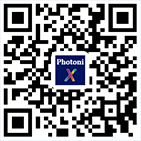期刊信息更多+
最新上线
, Available online ,
doi: 10.1186/s43074-025-00194-3
Abstract:
, Available online ,
doi: 10.1186/s43074-025-00210-6
Abstract:
, Available online ,
doi: 10.1186/s43074-025-00208-0
Abstract:
, Available online ,
doi: 10.1186/s43074-025-00209-z
Abstract:
引用排行
推荐论文更多+
- Review: distributed time-domain sensors based on Brillouin scattering and FWM enhanced SBS for temperature, strain and acoustic wave detection
- Three-step one-way model in terahertz biomedical detection
- Deep learning wavefront sensing and aberration correction in atmospheric turbulence
- Promising applications of aggregation-induced emission luminogens in organic optoelectronic devices
- Recent advances in multi-dimensional metasurfaces holographic technologies
- Accurate calibration of thermophotovoltaic efficiency
下载排行更多+
- Research progress in optical neural networks: theory, applications and developments
- Deep learning wavefront sensing and aberration correction in atmospheric turbulence
- Nonlinear meta-optics towards applications
- Optical waveguides based on one-dimensional organic crystals
- Ultra-short-pulse high-average-power megahertz-repetition-rate coherent extreme-ultraviolet light source
- Intelligent designs in nanophotonics: from optimization towards inverse creation
- Smart computational light microscopes (SCLMs) of smart computational imaging laboratory (SCILab)
- Spontaneous emission in micro- or nanophotonic structures
- Subwavelength silicon photonics for on-chip mode-manipulation
- The challenges of modern computing and new opportunities for optics




















